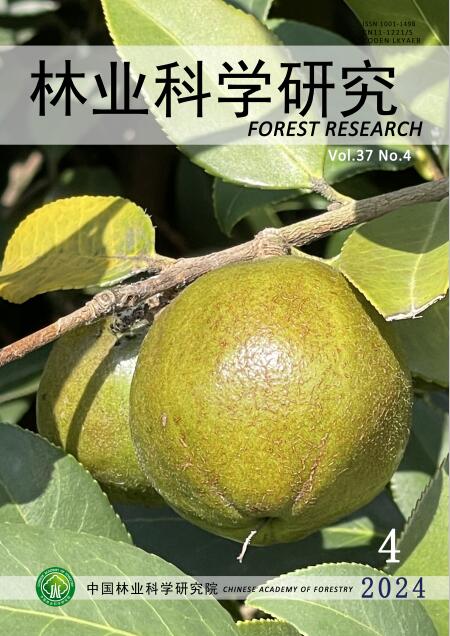Reconstruction of Piñon-Juniper Forest Structure to Examine Historic Wildlife Habitat Characteristics in the Davis Mountains, USA
Q4 Agricultural and Biological Sciences
引用次数: 0
Abstract
Changes in pinon-juniper (Pinus spp., Juniperusspp.) communities across the southwestern United States have often decreased ecological diversity of the understory and increases of exotic species. Reconstructing age and establishment patterns provides essential understanding to guide treatments and management for anthropogenically-altered forests. The goal of this study was to determine how patterns of pinon and juniper growth in the Davis Mountains, Texas, varied over time and how this pattern influenced wildlife habitat of several indicator species. Establishment patterns and basal area growth progression were identified, canopy cover estimates regressed from pre-developed canopy regression equations to re-construct historic forest stand structure and canopy characteristics in twenty-year intervals and applied to known wildlife habitat requirements of Montezuma quail (Cyrtonyx montezumae), black bear (Ursus americanus) and White-tailed deer/Mule deer (Odocoileus virginianus/O. hemionus). The sites provided habitat for these wildlife species, but the specific habitat provided changed over time. Prescribed burning could promote better forage for black bear while fire exclusion could improve dense cover for escape and denning cover. Montezuma quail would use thinner, less-dense habitats for forage, loafing and escape cover and the denser stand dynamics for cover and shelter. If forage habitat for Montezuma quail is required, the more open habitats found in the early 1900’s could be re-established by prescribed burning and tree removal. Habitat for White-tailed deer transitioned from more open forage, loafing, fawning cover in the early 1900’s to denser thermal, and escape cover in the later 1900’s. Mule deer habitat transitioned from a preferred open habitat to a more dense cover habitat that would be utilized primarily for bedding. Prescribed burning and tree removal to open up the current habitat would benefit Mule deer and white-tailed deer to a lesser degree.重建美国戴维斯山脉Piñon-Juniper森林结构以研究历史野生动物栖息地特征
美国西南部松柏(Pinus spp., Juniperusspp.)群落的变化往往导致林下生态多样性的减少和外来物种的增加。重建林龄和群落模式为指导人为改变森林的治理和管理提供了必要的认识。本研究的目的是确定德克萨斯州戴维斯山脉松树和杜松的生长模式如何随时间变化,以及这种模式如何影响几种指示物种的野生动物栖息地。利用预建立的林冠回归方程对林冠覆盖度估算值进行回归,以20年为间隔重建历史林分结构和林冠特征,并将其应用于已知野生动物栖息地需求,如Montezuma鹌鹑(Cyrtonyx Montezuma ae)、黑熊(Ursus americanus)和白尾鹿(Odocoileus virginianus/O)。hemionus)。这些地点为这些野生动物提供了栖息地,但所提供的具体栖息地随着时间的推移而变化。规定燃烧可以促进黑熊更好地觅食,而禁火可以提高黑熊逃生和筑巢的密蔽性。蒙特祖玛鹌鹑会使用更薄、密度更低的栖息地觅食、闲逛和躲避,而密度更大的林分则是掩护和庇护所。如果需要蒙特祖玛鹌鹑的饲料栖息地,可以通过规定的焚烧和树木移除来重建20世纪初发现的更开放的栖息地。白尾鹿的栖息地由20世纪初较为开放的草料、游荡、小鹿覆盖区向20世纪后期较为密集的热覆盖区和逃逸覆盖区过渡。骡鹿的栖息地从一个首选的开放栖息地过渡到一个更密集的覆盖栖息地,主要用于床上用品。规定的焚烧和砍伐树木来开辟现有的栖息地将使骡鹿和白尾鹿在较小程度上受益。
本文章由计算机程序翻译,如有差异,请以英文原文为准。
求助全文
约1分钟内获得全文
求助全文
来源期刊

林业科学研究
Environmental Science-Ecology
CiteScore
0.90
自引率
0.00%
发文量
4834
期刊介绍:
Forestry Research is a comprehensive academic journal of forestry science organized by the Chinese Academy of Forestry. The main task is to reflect the latest research results, academic papers and research reports, scientific and technological developments and information on forestry science mainly organized by the Chinese Academy of Forestry, to promote academic exchanges at home and abroad, to carry out academic discussions, to flourish forestry science, and to better serve China's forestry construction.
The main contents are: forest seeds, seedling afforestation, forest plants, forest genetic breeding, tree physiology and biochemistry, forest insects, resource insects, forest pathology, forest microorganisms, forest birds and animals, forest soil, forest ecology, forest management, forest manager, forestry remote sensing, forestry biotechnology and other new technologies, new methods, and to increase the development strategy of forestry, the trend of development of disciplines, technology policies and strategies, etc., and to increase the forestry development strategy, the trend of development of disciplines, technology policies and strategies. It is suitable for scientists and technicians of forestry and related disciplines, teachers and students of colleges and universities, leaders and managers, and grassroots forestry workers.
 求助内容:
求助内容: 应助结果提醒方式:
应助结果提醒方式:


